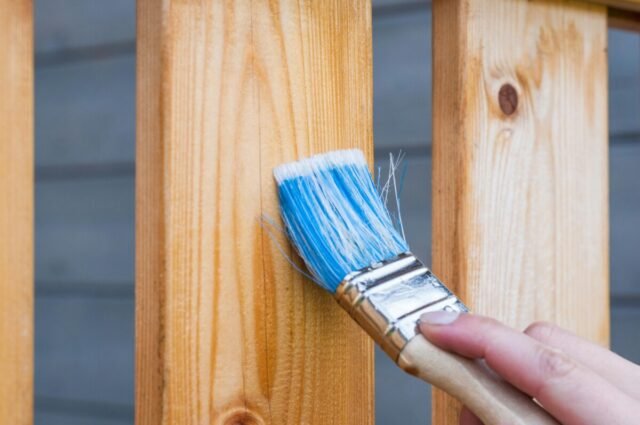Painting your home can seem like a daunting task, but with proper planning and preparation, it can be accomplished by any motivated do-it-yourselfer. Not only does a fresh coat of paint improve the aesthetics of your home, it also increases curb appeal and adds value to your property. By following some key steps, you can successfully paint the interior and exterior of your house and unlock the many benefits of DIY home painting.
Planning and Preparing for Painting Your Home
The first step in undertaking any painting project is planning and preparation. Proper planning will help the painting process go smoothly and efficiently while preparation will ensure the paint adheres properly to surfaces.
Choosing the Right Paint
When painting your home, you first need to determine what type of paint is best suited to the job. Key choices include:
- Interior vs. Exterior Paint: Exterior paints are formulated to withstand weather elements like rain, wind, and sun exposure. Interior paints provide better washability and durability in lived-in spaces.
- Latex vs. Oil-Based Paint: Latex paints are water-based, easier to apply, and clean up with water. Oil-based paints are more durable but require paint thinner for brush cleaning.
- Paint Finishes: The sheen level impacts durability and ease of cleaning. Common options include flat, eggshell, satin, semi-gloss, and high-gloss.
- Color Selection: Factor in lighting, existing décor, personal preferences, and resale value when selecting paint colors. Neutrals and lighter shades open up spaces.
Gathering Supplies and Tools
Painting requires some essential supplies and tools. Be sure to gather:
- Drop cloths, painter’s tape, and masking paper to protect floors and surfaces
- Sandpaper, spackle, putty knives, and caulk for prep work
- Paintbrushes, paint rollers, paint trays, and paint can openers
- A ladder, extension pole, and scaffolding for reaching high areas
- Safety gear like glasses, gloves, and face masks
Preparing Surfaces
Proper surface preparation ensures paint adheres well to surfaces. Steps include:
- Cleaning walls, trim, and surfaces with mild soap and water
- Repairing cracks and holes with spackle; sanding rough areas
- Applying painter’s tape around trim, windows, outlets, and switches
- Covering floors, furniture, and fixtures completely with drop cloths
Following these planning and preparation tips will provide the foundation for a smooth, effective painting project.
Key Techniques for Painting Your Home’s Interior
When tackling an interior painting project, utilize these techniques for great results:
Ceiling Painting
Paint ceilings first before walls using these tips:
- Use a roller with an extension pole to reach ceilings without climbing ladders
- Divide ceilings into sections using painter’s tape; paint each section completely before moving on
- Apply paint in “W” or zig-zag motions, working methodically from one end to the other
- For flat ceilings, apply two coats; textured ceilings may only need one
Wall Painting
Employ these strategies when painting interior walls:
- Use angled brush to “cut in” along edges, corners, and trim
- Roll walls using up and down strokes, then finish with downward strokes
- Work in sections, cutting in edges before rolling middle, and blend areas together
- Apply multiple coats allowing proper drying time between coats
Trim Painting
Trim requires careful brushwork for best results:
- Use a high-quality trim brush for smooth, precise application
- Keep brush strokes with the grain of the wood for a smooth finish
- Paint slowly and carefully to avoid getting paint on walls and surfaces
- Apply two coats of paint for complete coverage and protection
Painting Your Home’s Exterior
Outdoor painting requires some specialized preparation and application methods:
Power Washing
Thoroughly clean exterior surfaces using a power washer before painting to remove:
- Dirt, mildew, mold, and grime
- Chalky paint or loose, flaking paint
- Grease, oil stains, and other contaminants
Protecting Windows and Doors
Avoid painting windows, doors, and trim by:
- Covering glass panes completely with painter’s tape
- Taping around frames, handles, hinges, and hardware
- Drape plastic over doors and windows for further protection
Painting Siding and Trim
Use these tips when painting exterior siding:
- Use extension poles to reach soffits and eaves without climbing ladders
- Apply paint in smooth, overlapping strokes to evenly coat siding
- Use airless sprayer to paint siding that is high off the ground
- Carefully brush paint trim, fascia, posts, and railings
Painting Doors and Windows
Employ special care when painting exterior doors and windows:
- Lightly sand surfaces before painting
- Use a high-quality exterior paintbrush
- Paint slowly and carefully, following the wood grain
- Apply at least 2-3 thin, even coats of exterior paint
Finishing Touches for Painting Your Home
Adding finishing touches will complete your paint job properly:
Applying Multiple Coats
For a durable finish:
- Allow at least 2-4 hours of drying time between coats
- Sand lightly between coats for a smooth, even finish
- Apply at least 2-3 coats for proper coverage and protection
Removing Painter’s Tape
To avoid damaging fresh paint:
- Pull tape away slowly when paint is dry to the touch
- Use a utility knife to score edges of tape before removing
- Touch up any spots as needed after tape is removed
Cleaning Up
Proper cleanup preserves tools and removes mess:
- Rinse brushes and rollers thoroughly until water runs clear
- Seal and store any leftover paint for future use
- Dispose of paint cans, thinner, and drop cloths properly
- Open windows to ventilate paint fumes from interior spaces
Conclusion
Painting your home is a satisfying project that adds beauty, protects surfaces, and increases your home’s value. Follow these tips for planning, preparation, application, and cleanup to achieve professional-looking results. Painting your own home allows you to customize décor, save money, and enjoy the fruits of your labor. With proper planning and technique, you can successfully paint your home’s interior and exterior.































